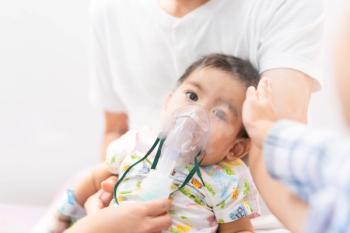
What factors are linked to severe COVID-19 in children?
A large cohort study offers important data on what factors are frequently tied to severe cases of COVID-19 in the pediatric population.
Since the start of the COVID-19 pandemic, the general understanding of how the disease affects children has shifted, from being seen as a disease with little to no impact on children to children being a significant proportion of patients contracting the virus. However, a lack of large cohort studies has made it difficult to build a robust knowledge base. A recent
The investigators performed a prospective cohort study that included encounters with an end date before September 2021 at 56 N3C facilities in the United States. All participants were aged younger than 10 years at the time of their first testing for COVID-19. Investigators looked at a number of outcomes including: demographic and comorbidity severity risk factors; clinical outcomes; acute COVID-19 versus multisystem inflammatory syndrome in children (MIS-C); and Delta versus pre-Delta variant differences for children with SARS-CoV-2.
In the cohort there were 1,068,420 people tested for COVID-19 of which 167,262 yielded positive test results. A total of 10,245 children required hospitalization and 1423 were ill enough to meet the criteria for severe disease such as mechanical ventilation (796) or extracorporeal membrane oxygenation (42). Higher severity disease was tied to a number of variables including male sex, being Black, and several pediatric complex chronic condition. The investigators found that vital signs and a number of laboratory test values from the day of admission provided predictions for peak disease severity. Increased odds for MIS-C versus acute COVID-19 were tied to being male, Black, aged younger than 12 years, and not having a pediatric complex chronic condition. When compared to children with acute-COVID-19 infection, those with MIS-C were found to have more inflammatory signs in the laboratory profile, a severe clinical phenotype, as well as higher rates of both invasive ventilation and vasoactive-inotropic support.
The investigators concluded that there are observable differences in a number of areas such initial vital signs and laboratory values as well as preexisting comorbidities that could help identify those who are more likely to have a severe disease course. They urged for further research to help mold their findings into strategies for improving outcomes.
Reference
1. Martin B, DeWitt P, Russell S, et al. Characteristics, outcomes, and severity risk factors associated with SARS-CoV-2 infection among children in the US national COVID cohort collaborative. JAMA Netw Open. 2022;5(2):e2143151. doi:10.1001/jamanetworkopen.2021.43151
Newsletter
Access practical, evidence-based guidance to support better care for our youngest patients. Join our email list for the latest clinical updates.










